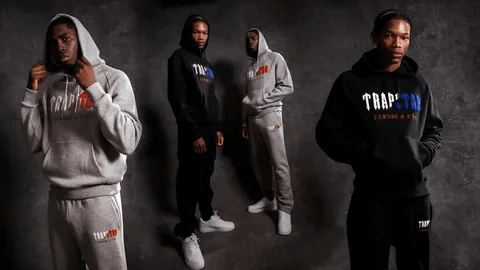
In the fast-paced world of fashion, where trends come and go at lightning speed, Trapstar has emerged not just as a brand—but as a cultural force. Born on the streets of West London, Trapstar has evolved from selling custom T-shirts out of car trunks to becoming one of the most recognizable names in global streetwear. It’s more than just clothing; it’s a symbol of self-made success, creative rebellion, and underground authenticity.
So how did this mysterious, graffiti-inspired label become a global phenomenon? Let’s dive into the story behind Trapstar—and why it continues to dominate both the streets and the fashion conversation.
The Birth of a Movement
Trapstar was founded in the early 2000s by friends Mikey, Lee, and Will—three creatives from London who shared a vision: to design clothes that reflected the reality of the streets they grew up on. With no fashion school background or big investors behind them, the trio took a grassroots approach. They started printing shirts in their bedrooms and sold them directly to friends and local creatives.
The brand’s name itself is a powerful metaphor—“Trap”, referencing the hustle and grind of street life, and “Star”, symbolizing the ambition to rise above. Together, it represented the dual identity many young people relate to: staying grounded while striving for more.
What made Trapstar different from other up-and-coming streetwear brands was its mystique. Slogans like “It’s A Secret” and limited-edition drops created an atmosphere of exclusivity. This strategy wasn’t just about marketing—it was about building a community of insiders, where wearing Trapstar meant you were in the know.
Design That Speaks Louder Than Words
Trapstar’s designs are bold, rebellious, and deeply rooted in street culture. You’ll often find gothic fonts, oversized graphics, and militaristic details across its collections. From oversized puffer jackets and graphic tees to hoodies and cargo pants, each piece feels intentional—never mass-produced.
The brand’s most recognizable item? The Trapstar jacket. It’s become a staple of the UK urban fashion scene, blending utility with attitude. Embellished with bold back logos and hidden messages, the jacket isn’t just a fashion item—it’s a statement.
What keeps Trapstar fresh is its ability to evolve without losing its edge. Whether it’s reflective prints, techwear influences, or dark, minimalist color palettes, Trapstar continues to innovate while staying true to its underground roots.
Worn by the Culture, Powered by the People
One of Trapstar’s greatest strengths is its deep-rooted connection to music and youth culture. The brand gained massive traction through co-signs from UK rap and grime legends like Stormzy, Skepta, and Giggs, who not only wore the clothes but represented the ethos behind them.
International stars soon followed. Rihanna, Jay-Z, and A$AP Rocky have all been spotted in Trapstar, taking the brand from London streets to global stages. In 2015, Roc Nation (Jay-Z’s entertainment company) officially partnered with Trapstar, a monumental move that expanded its reach into the US and beyond.
But even with global attention, Trapstar never forgot where it came from. It continues to support up-and-coming talent and maintains close ties to the communities that helped shape it. This loyalty has earned it a level of respect many brands can’t buy.
Limited Drops, Unlimited Impact
Trapstar operates on a model that many major brands have tried to replicate—limited availability, high demand, and cultural relevance. Most of their releases are time-sensitive or limited in quantity, which fuels anticipation and resell value.
This approach creates hype, but more importantly, it maintains the brand’s identity as a premium streetwear label with grassroots energy. People don’t just buy Trapstar to fit in—they buy it to stand out.
Trapstar Today: Global Brand, Local Energy
Today, Trapstar is stocked in stores across Europe and the US, with a loyal following on every continent. Yet, it still feels personal. From the gritty streets of West London to the fashion-forward avenues of Paris and New York, Trapstar has proven that real culture can’t be manufactured—it has to be lived.
The brand’s success isn’t just about smart marketing or celebrity endorsements. It’s about storytelling. Every piece of Trapstar clothing tells a story of hustle, ambition, rebellion, and unity. It’s the story of people who refuse to be boxed in by stereotypes or circumstances.
Final Thoughts: Why Trapstar Matters
In an era where fashion is often fast, fleeting, and fake, Trapstar stands as a beacon of authenticity. It’s not trying to please everyone. It’s not trying to go mainstream. And that’s exactly why it resonates.
Whether you’re a streetwear enthusiast, an underground artist, or someone who simply respects the grind, wearing Trapstar means wearing your truth.
Trapstar isn’t just what you wear. It’s a lifestyle. A mindset. A movement.

